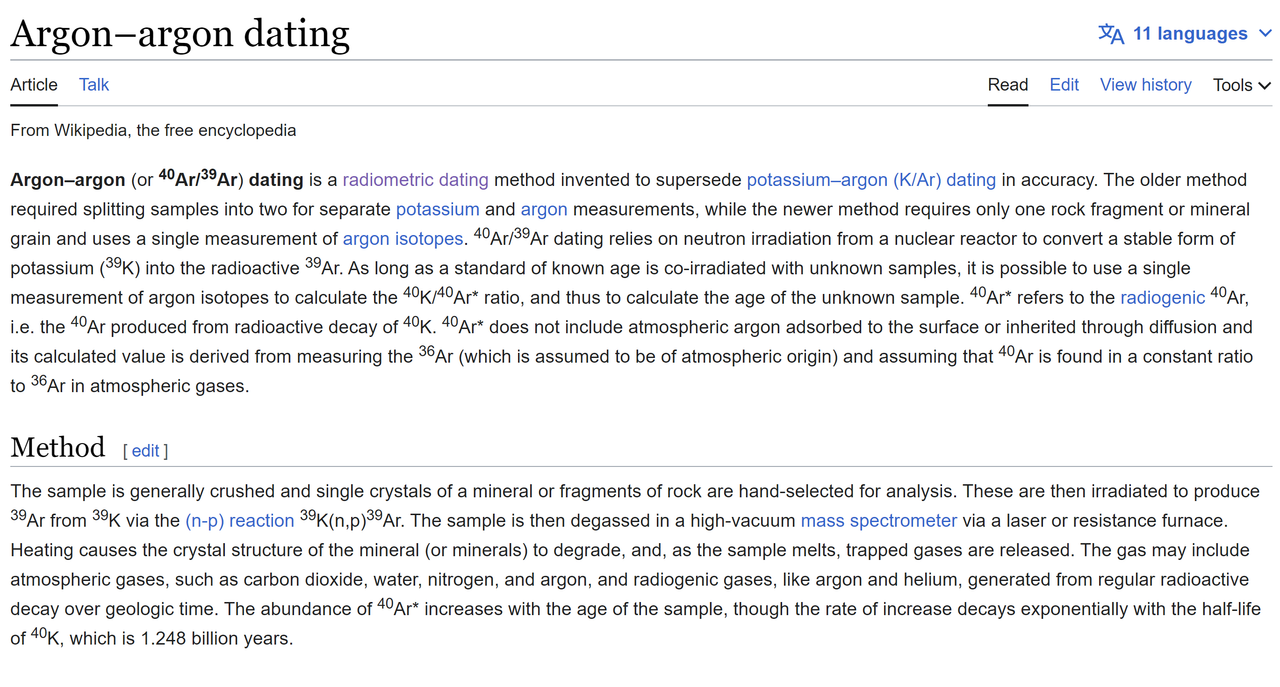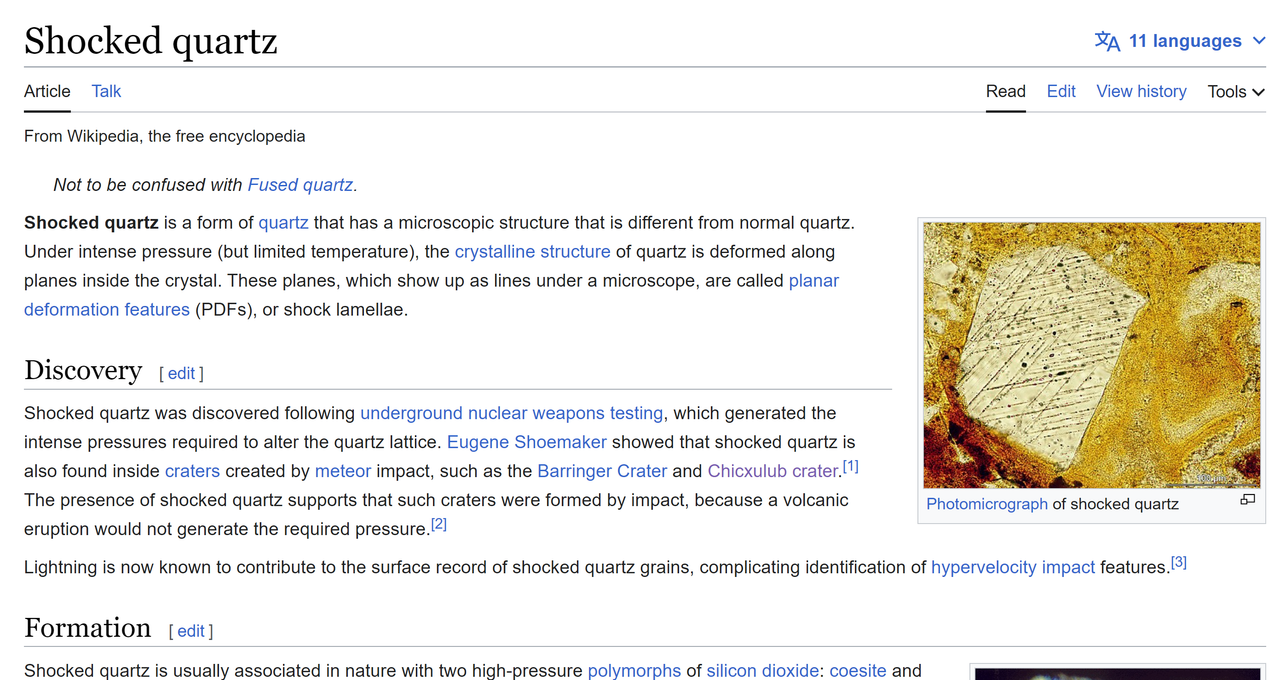I'm about to post evidence of radiometric dating, and he will ignore it, juelz, or just say "that's not proof" without any evidence or an attempt at a viable debunk.

1) Argon-40/Argon-39 is a radiometric dating method that takes a crushed rock or mineral sample and irradiating it, which produces an isotope of Argon, Argon-39. When you heat this sample with a laser in a spectrometer, the crystals melt, and release gases. The more Argon-40 it releases, the older the sample was. This method is viable over a billion years
2) During the Cretaceous Period (the last non-avian dinosaur era, ~66 million years ago), the Earth was impacted by a meteor that scientific consensus states caused the K-T extinction event that saw the last non-avian dinosaurs go extinct. At the impact crater, crystals in granite were melted. We've used Argon-Argon dating (using the methods I described in 1) to date this material to roughly 66 million years old.
Impacts like these produce what is know as "shocked quartz", or quartz that is structurally different to regular quartz, due to immense pressure. This is extremely important because we can find shocked quartz at many different impact craters from meteors hitting the Earth AND at locations where there has been underground nuclear tests:
From this shocked quartz, we are able to determine the age of the impact, through usage of Argon-Argon dating, the evidence for which can be found here:
https://eps.harvard.edu/files/eps/files/renne.kt_.science.2013.pdf
^^That is an inarguable, peer-reviewed study performed by Harvard scientists and researchers on the material from a crater, which used Argon-Argon dating.










 and i definitely am not watching 2 hours of your bussy superiors complain
and i definitely am not watching 2 hours of your bussy superiors complain



